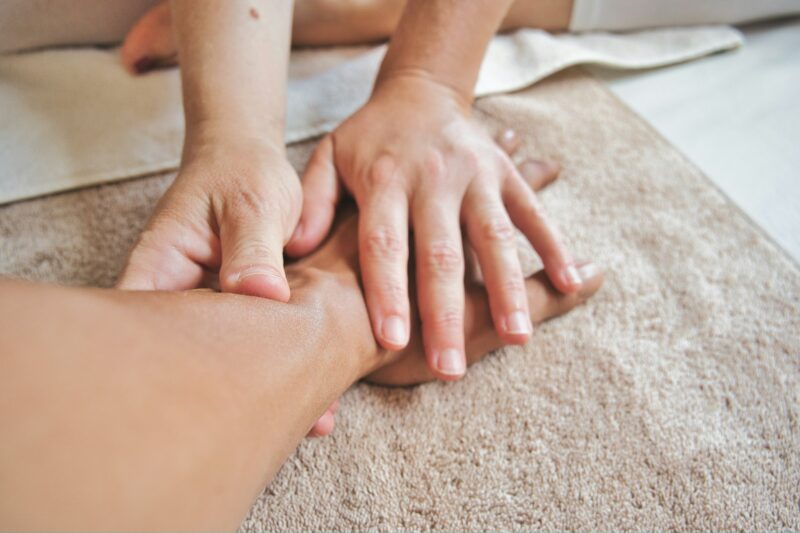Starting Your Journey into Massage Therapy Education
Enrolling in a massage therapy class is an exciting step toward a fulfilling career of helping others feel their best. It’s not only a chance to explore the mechanics of the human body but also an opportunity to learn valuable skills that can elevate your professional growth.
If you’re about to start your first massage therapy course, you might have a few questions. This guide will give you a glimpse into what a typical program looks like, key concepts to expect, and tips to thrive during hands-on training.
Why Choose a Massage Therapy Class?
Massage therapy is gaining recognition for its significant health benefits, from reducing stress to enhancing circulation. Training professional therapists have become a priority for organizations like dexteritypd.com, which focuses on high-quality learning tailored for massage enthusiasts.
A foundational massage course is your first step into grasping this knowledge, and bringing concepts to life under expert guidance.
Whether you aim to open your practice or specialize in techniques like sports massage or prenatal therapy, beginning this educational journey is critical to mastering the craft.
What Can You Expect from Your First Class?
A Focus on Anatomy and Physiology
Your first lessons will likely focus on understanding the structure and functions of the human body. This knowledge forms the basis for identifying muscle groups, pressure points, and how various techniques can aid in healing. Expect topics like musculoskeletal systems and an exploration of soft tissue anatomy.
Hands-on Training
Massage therapy is rooted in tactile skills. Most courses incorporate hands-on sessions where you’ll practice techniques such as effleurage, petrissage, and deep-tissue movements. You’ll learn how to work on live models while receiving constructive feedback, ensuring your skills are practical and precise.
Introduction to Client Communication
Professionals in this field need strong interpersonal skills. Your training will likely emphasize the importance of clear communication with clients. From discussing treatment plans to understanding contraindications, this part of your course is vital for ensuring safety and building trust.
Tasting Professional Ethics
Professional ethics form a major pillar of a massage therapy career. Expect to discuss topics such as maintaining boundaries, confidentiality, and adhering to regional legislation and standards.
Tip for Success:
Ask plenty of questions during the hands-on training classes. Building muscle memory is essential in this industry.
Benefits of Massage Therapy Training
- Developing Expertise
Build the knowledge and confidence to address client needs effectively while enhancing your professional credibility.
- Industry-Recognized Certification
Many reputable programs, such as those at dexteritypd.com, offer certificates that increase your employability and help you stand out in the competitive wellness market.
- Flexibility in Career Choices
With strong foundational skills, you can choose a specialty that aligns with your interests, such as sports massage or aromatherapy.
- Community Building
Many massage students value the shared learning experiences in training labs, where collaborative practice deepens their expertise.
Key Features of a Great Program:
- Certified instructors with industry experience.
- Comprehensive study materials, including a detailed student guide.
- Access to online resources and video modules for continued learning.
- Plenty of opportunities for hands-on experience with supervision.
How to Thrive in Your Massage Therapy Class
Here are some actionable steps to ensure you get the most from your training experience, whether it’s in person or online.
1. Understand Your Curriculum
Familiarize yourself with the course syllabus before starting. Understanding the topics ahead of time helps you prepare mentally for what lies ahead.
2. Invest in Quality Tools
A good massage table, lotions, and ergonomic tools will improve your technique while ensuring client comfort during practical sessions.
3. Dedicate Time to Practice
Repetition is key when mastering massage techniques. Dedicate additional hours outside class to hone your skills, even if it means practicing with friends and family.
4. Leverage Online Resources
Platforms like dexteritypd.com offer video-based guides and interactive modules that complement the classroom experience. Use these tools to clarify doubts and reinforce lessons.
5. Be Open to Feedback
Whether it’s from instructors, classmates, or your practice models, constructive feedback is invaluable. Use it as a growth opportunity to refine your skills.
6. Build Professional Connections
Your peers and instructors can become a valuable part of your long-term network. Engage in conversations to learn from their experiences and offer support when needed.
Your First Step Toward a Rewarding Career
Starting a massage therapy class is more than just learning techniques; it’s the foundation for a rewarding and impactful career. You’ll gain not only technical skills but also the confidence and ethical foundation needed to make a difference in your client’s lives.
If you’re eager to learn from experienced educators and explore high-quality learning resources, consider checking out dexteritypd.com. Their massage courses provide a comprehensive blend of theory, hands-on training, and professional certification designed to elevate your career to the next level.
By staying committed to learning, practicing diligently, and keeping an open mind, you’re well on your way to becoming a skilled and successful massage therapist.

